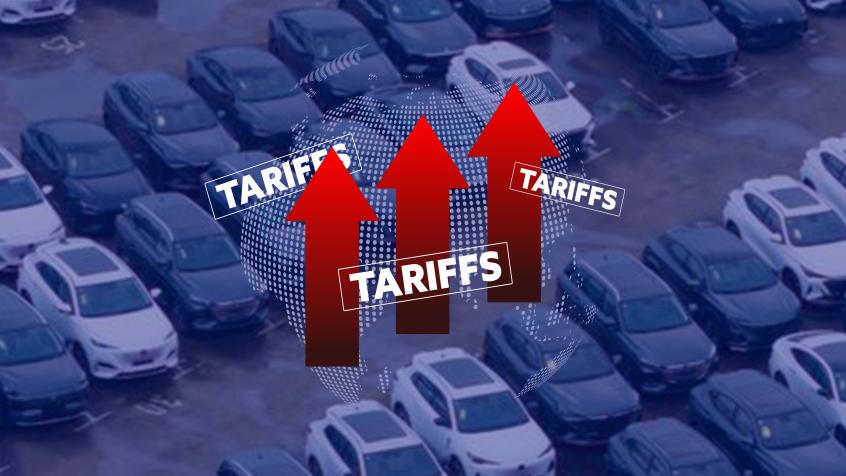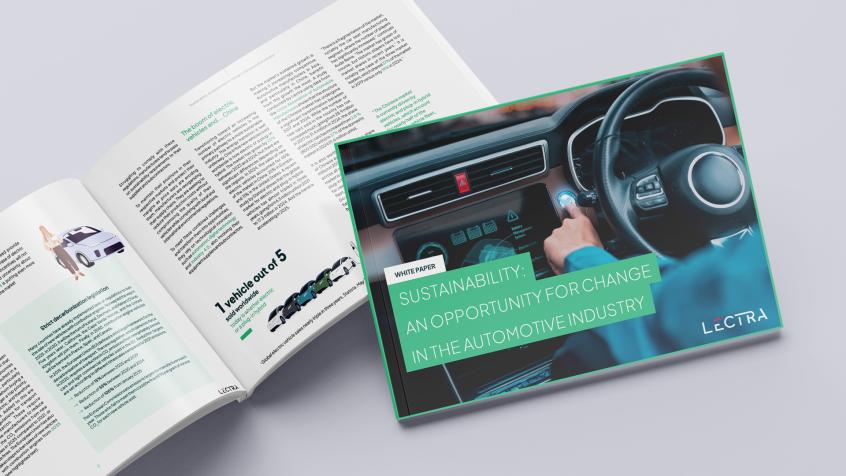Why continuous transformation is the better method to remaining competitive
How Automotive Cutting Room 4.0 by Lectra helps manufactures gain a more agile, iterative, and sustainable approach to digitalization.

Embracing Continuous Transformation: A Smarter, Sustainable Approach for the Automotive Industry
Rethinking the approach, the automotive industry is realizing that continuous transformation is more effective than traditional "Digital Transformation" for today's fast-paced business landscape.
Embracing smarter strategies, such as iterative improvements and ongoing adaptations, proves superior to costly, one-time overhauls for faster and more sustainable progress.
While transformational change may be necessary in certain situations where fundamental shifts are required, it is continuous change, enabled by Automotive Cutting Room 4.0 by Lectra, that provides a more agile, iterative, and sustainable approach to achieving cost savings.
What if there was a way to meet fluctuations in demand without sacrificing quality
Continuous transformation enables Tiers 1 and 2 manufacturers to be more competitive and meet fluctuating demand by gaining greater operational flexibility and agility.
The frustration for many manufacturers seeking to stay ahead of the competition and unlock new levels of productivity is managing production complexities arising from variations in equipment capabilities and material characteristics. It is time-consuming and error-prone, leading to unnecessary bottlenecks and reduced performance.
However, what if there was a way to meet fluctuations in demand without sacrificing quality or time to market? If manufacturers could effortlessly adapt cutting parameters to match actual equipment capabilities and material characteristics, they would achieve greater levels of agility and demand-responsiveness.
How to optimize production processes to achieve operational efficiency
Automotive Cutting Room 4.0 by Lectra connects and collects data all along the manufacturing process and then adds analytics to make sense of the data. This digital capability enables key operational decision-makers to visualize the production in real-time, access benchmark information, gain insights for performance improvements, and make informed choices using actual performance data.
How to reduce the strain of labor costs without sacrificing product quality
Continuous transformation is a bottom-up approach that seeks to maximize the potential of existing processes through incremental adjustments. This means it includes the talent and acumen of highly skilled human-labor in the process of achieving greater operational efficiency and cost-savings.
Digital Transformation, on the other hand, often requires a top-down approach and aims to transform entire processes by leveraging digital technologies to drive large-scale changes across the organization. It risks excluding employee involvement in the decision-making and management process.
Only by embracing human-digital collaboration, a central trait of continuous transformation, can businesses effectively optimize the knowledge of its labor force and empower employees to focus on more strategic and complex tasks that require human expertise and creativity.
Why continuous transformation is the smarter approach
Manufacturers embracing continuous transformation mitigate risks and adapt to evolving market demands without losing operational efficiency or incurring excessive labor costs. As a result, they gain a competitive edge in the industry and position themselves for sustainable long-term success.
Automotive Cutting Room 4.0 by Lectra is the ideal solution to embark on a continuous transformation initiative. The solution helps to overcome the complexities of change while leveraging resources in the most efficient way.
- Achieve efficiency
Simplify cutting operations, improve product quality, and lower operating costs, paving the way for enhanced productivity and increased profitability.
- Decrease costs
Optimize the knowledge of your labor force and empower employees to focus on more strategic and complex tasks that require human expertise and creativity.
- Attain Industry 4.0 with ease
Embrace Industry 4.0 without requiring significant alterations to equipment or the wholesale redesigning of existing internal workflows.
Related content


